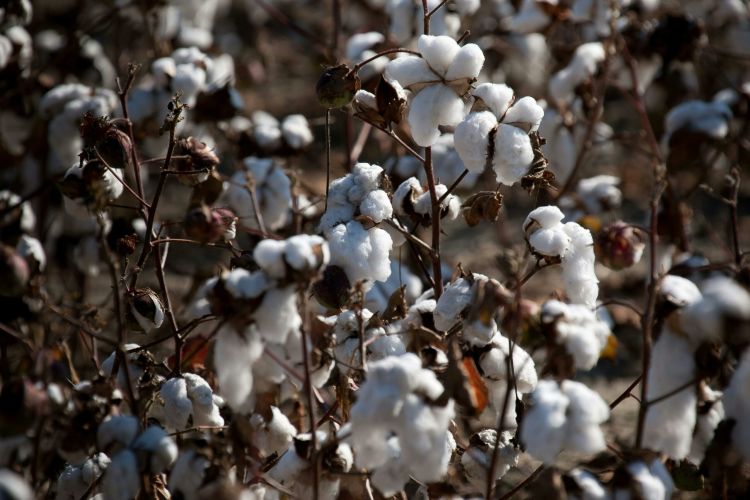Questions You Were Afraid to Ask #12

The only bad question is the one left unasked. That’s the premise behind many of our recent posts. Each covers a different investment-related question that many people have but are afraid to ask. In this post, let’s cover a specific type of investment that people often wonder about:
Questions You Were Afraid to Ask #12:
What does it mean to invest in commodities?
In an investing context, a commodity is a physical product that is either consumed or used to produce something else. For example, corn, sugar, and cotton are all commodities. We generally refer to products like these as agricultural commodities. Pork, poultry, and cattle are livestock commodities. Energy products, like oil and gas, are commodities, too. So are precious metals like gold, silver, and platinum.
A commodity is generally seen as an alternative investment. Alternative investments are called that because they trade less conventionally than more traditional stocks and bonds. Despite this, many people find the idea of investing in commodities to be an attractive one. For some, it’s because it makes more intuitive sense than owning shares in a company (buying stock) or lending money to an organization (buying bonds). There’s something tangible about the idea of investing in things we see and use daily. By comparison, stocks and bonds can feel a little more abstract. For others, investing in commodities is a way of adding even more diversification to a portfolio.
That said, the question of how to invest in commodities can be an overwhelming one. Most people – including experienced investors – don’t even know how to get started! So, let’s discuss some of the potential ways to invest in commodities. Then, in our next post, we’ll cover some of the pros and cons of this particular asset class.
The oldest and most basic way to invest in commodities is to physically own them. This is what traders have been doing for most of human history. Person A buys a herd of cattle from Person B, and then sells some or all of them to Person C, hopefully for a profit. Person X buys a stack of gold bars from Person Y and then sells them to Person Z. You get the idea.
This, of course, is still done today. But for most retail investors – regular folks like you and me – taking physical ownership just isn’t feasible. When you buy commodities, you must also have a way to store them. Unlike stocks and bonds, commodities take up space… usually a lot of it! You must also have a way to deliver the commodities to and fro. You’d also want to purchase insurance on the product in case something went wrong. And of course, you would need to have a lot of technical expertise to know how to trade those commodities for a fair price.
For these reasons, most investors choose one of two avenues: Buying stock in companies that produce commodities or by investing in commodity-based funds. Let’s start with the first.
Let’s say you wanted to invest in a certain type of precious metal that you feel will rise in value in the future. Obviously, for reasons we’ve already covered, you don’t want to own the metal itself. So, instead, you buy stock in a company that specializes in mining or extracting that particular metal. Should the price of that metal go up, it’s quite possible that the stock price for the company that specializes in that metal will go up, too.
Another way to invest in commodities is through commodity-based funds. You may remember our previous post on the different types of investment funds. Commodity-based funds are very similar, except they are centered around specific commodities. The fund may be comprised of a number of companies that specialize in the commodity. Some funds may even purchase and store the physical product itself if they have the means to do so. Either way, these types of funds – which can be mutual funds or exchange-traded funds – can give you exposure to whatever commodities you’d like to invest in.
There is another way that some investors participate in commodities called future contracts. These are “contracts in which the purchaser agrees to buy or sell a specific quantity of a physical commodity at a specified price on a particular date in the future.”1 So, let’s say an investor purchases a contract to buy X barrels of oil for $75 per barrel at some later date. By doing so, they anticipate the price of oil will rise above that, so their price affectively becomes a bargain. Then, when the specified date arrives, the investor accepts a cash settlement. This means the investor is credited with the difference between the initial price they paid and the current market price. This is instead of receiving physical ownership of the oil. Of course, if the price of oil goes below $75 per barrel, the investor would have to pay back that difference themselves.
Commodity futures are a complex topic, and to be honest, individual investors rarely turn to them. They are more often used by institutional investors like commodity-based funds.
So, that’s the how of investing in commodities! In our next post, we’ll get more into the why by discussing the pros and cons of commodities. As you know, all types of investments come with risks, and commodities are no exception. They’re certainly not right for everyone!
In the meantime, now you know what it means to “invest in commodities.” We look forward to diving even deeper into this topic in our next post.
1“Futures and Commodities,” FINRA, https://www.finra.org/investors/investing/investment-products/futures-and-commodities